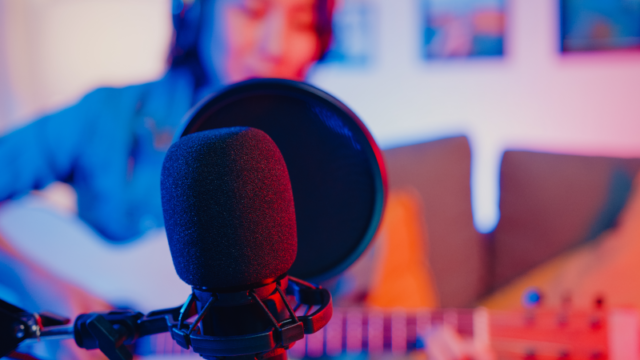What do Netflix and McDonald’s have in common? Besides being globally known brands, they each have a unique identifying sound that you’ve most likely memorized, even if it was unintentional. McDonald’s “I’m Lovin’ It” jingle has been playing on our TVs for decades now, and the Netflix “Ta-dum” booms through our speakers every time we open the app. While eye-catching graphic designs are a cornerstone of marketing, audio logos like these are the subtle signals that move in the shadows until they’re stuck in our heads.
Sonic branding, or audio branding, is far from a new concept. Yet, it continues to find new life among brands today to create advertising campaigns that are innovative and, for better or for worse, play themselves on repeat in our minds.
From some old trailblazers to the new sounds changing the game, here are some examples to inspire your next branding campaign.
Yodeling to Success
No doubt the “RI-CO-LAAAAA!” jingle still rings in consumers’ heads when they see the product on grocery store shelves, but it wasn’t always this way.
The Hustle reports that Ricola was originally struggling to expand into the international market and make its name heard across the globe. So, the solution was to announce their name loud enough for everyone to hear.
After recruiting both a yodeler and an alphorn player, Ricola broadcasted their most successful ad in 1993, cementing their name and brand into the minds of everyone who heard it.
“By 2005, Ricola was the second-leading cough-drop maker in the US, trailing only Halls. The company remains a top seller today, using the same sonic logo.”
—Mark Dent, The Hustle
Ricola’s sonic branding success was no accident. According to research from 2020, implementing sonic brand cues within your ads is likely to help them be up to 8.53 times more effective than ads without them.
The Quiet Revolution
Sonic branding is still powerful today, although it may not look the same. Instead of traditionally attention-snatching sounds to break through the noise of other ads, some brands are becoming the loudest by being the quietest.
A dive into successful campaigns examines one of Coach’s strategies, describing, “the noises associated with Coach, from the ‘always satisfying sound’ of its Turnlock bag fastenings to the clink of its metal buttons,” bringing the attention to the feeling that comes with the sound of Coach products.
This strategy didn’t come out of nowhere. In fact, it’s about taking a modern trend and blending it with a tried-and-true marketing move.
ASMR, also known as Autonomous Sensory Meridian Response, is a physical sensory response to stimuli such as tapping, whispering, and crinkling. Avid fans of ASMR usually seek it out to feel relaxed, especially when dealing with insomnia.
And what better way to enhance your image than by making your target audience feel relaxed at the thought of your brand?
KFC took full advantage of this possibility in their “Finger Lickin’ Good Vibes” ad, which showcased relaxing rain sounds—until they revealed it was actually their fried chicken. By associating the enhanced sounds of frying chicken with the soothing tones of rain over leaves, KFC cleverly positioned its product not just as food but as a sensory experience, tapping into the emotional connection between comfort food and relaxation.
What Does It Take?
Now that we’ve gone through the different examples of sonic branding, it’s your turn. Follow these three steps as you design a campaign that is hard to forget:
- Conduct Audience Research on Sound Preferences: Misophonia, a condition that causes stressful responses to certain sounds is estimated to affect about 20% of the population. For some brands, ASMR might not be the right choice for their audience. Listen to your community to determine what sounds they prefer and how they want to hear it.
- Analyze Competitors’ Sonic Strategies: Industry competitors are a great source of inspiration. Identify how they used sonic branding and find a way to make it your own to stand out.
- Leverage Neuromarketing Studies: Sound is intricately linked with neurological processing. To grasp a better understanding of how sound marketing can work, stay in tune with neurological studies. Did you know that, according to Yale, hearing an unexpected sound could “lead to riskier decision-making,” while silence improves how we make decisions? How might this knowledge be useful for your sonic branding campaign?
Lasting Impressions
Sonic branding offers a powerful way for businesses to create memorable, emotional connections with their audiences through sound. Whether it’s the nostalgic ring of Ricola’s yodel or the soothing ASMR vibes of KFC’s campaign, these audio strategies demonstrate the versatility of sound in enhancing brand identity. As you embark on your own sonic branding journey, remember that the key lies in knowing your audience, learning from competitors, and leveraging sound’s psychological impact to craft a truly unforgettable experience.





